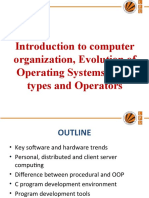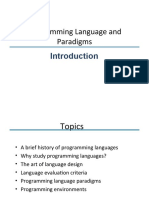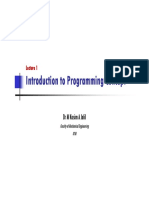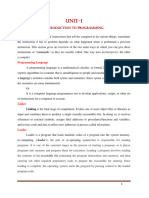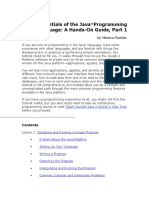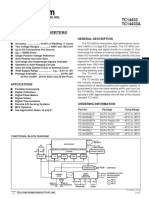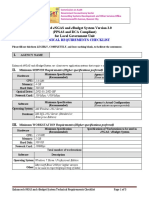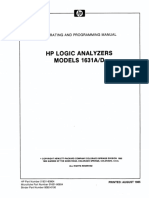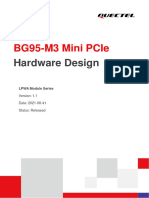0% found this document useful (0 votes)
148 views33 pagesLCC 6310 The Computer As An Expressive Medium
The document provides an overview of the syllabus for a course on the computer as an expressive medium, including an introduction to the professor and their work, required and recommended readings, and a brief discussion of programming languages and paradigms like object-oriented programming that will be covered.
Uploaded by
laurafriesCopyright
© Attribution Non-Commercial (BY-NC)
We take content rights seriously. If you suspect this is your content, claim it here.
Available Formats
Download as PDF, TXT or read online on Scribd
0% found this document useful (0 votes)
148 views33 pagesLCC 6310 The Computer As An Expressive Medium
The document provides an overview of the syllabus for a course on the computer as an expressive medium, including an introduction to the professor and their work, required and recommended readings, and a brief discussion of programming languages and paradigms like object-oriented programming that will be covered.
Uploaded by
laurafriesCopyright
© Attribution Non-Commercial (BY-NC)
We take content rights seriously. If you suspect this is your content, claim it here.
Available Formats
Download as PDF, TXT or read online on Scribd
/ 33

